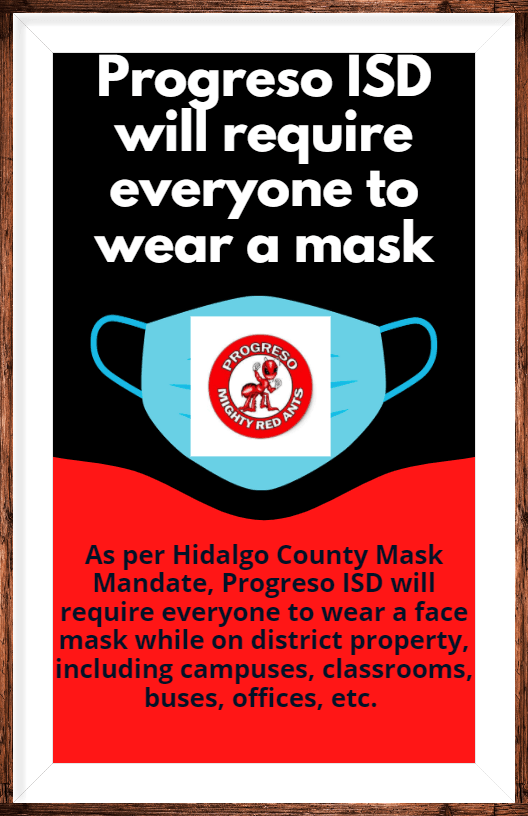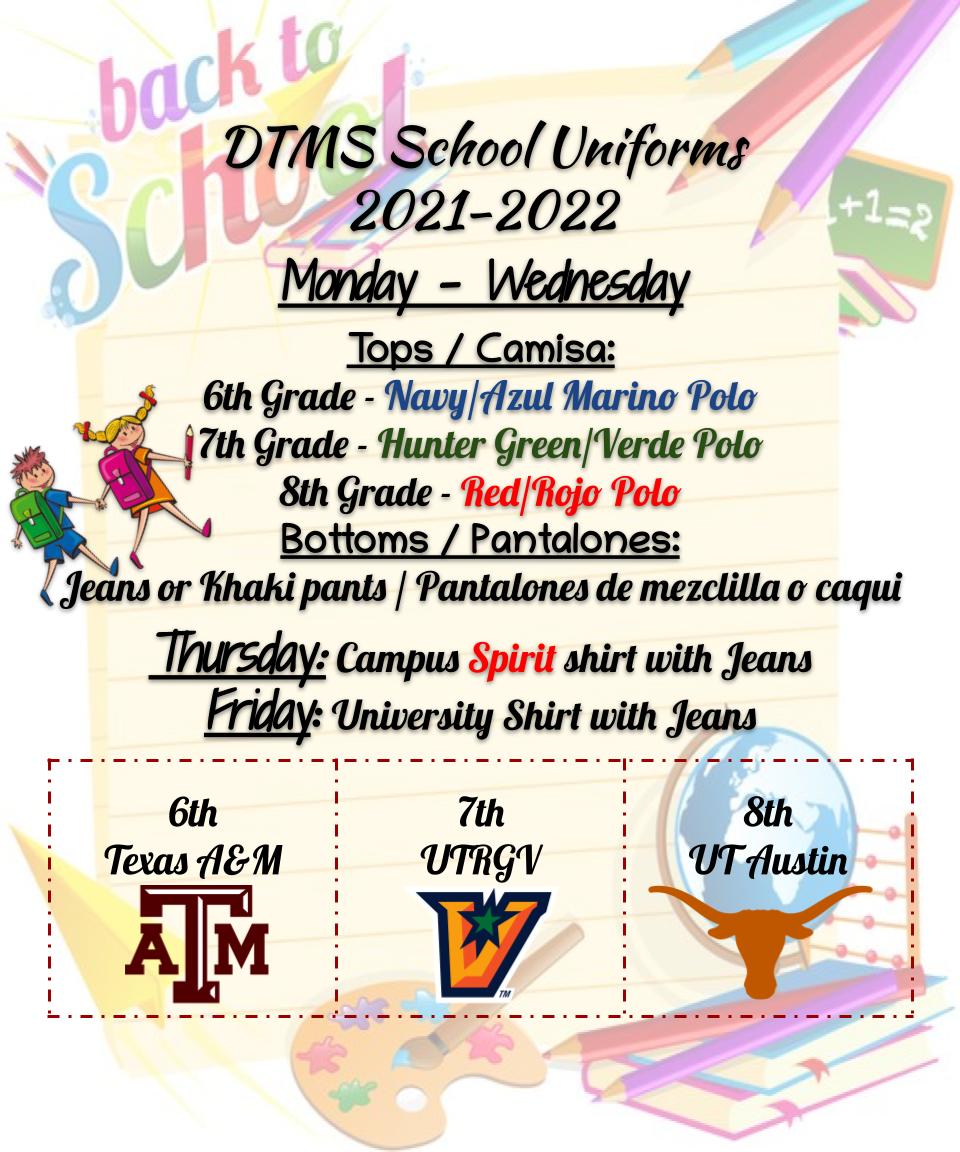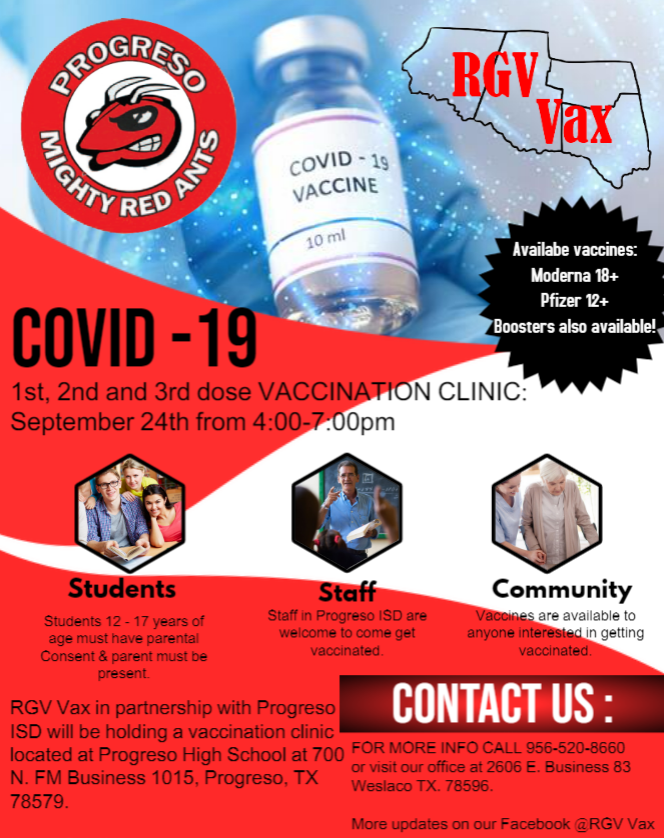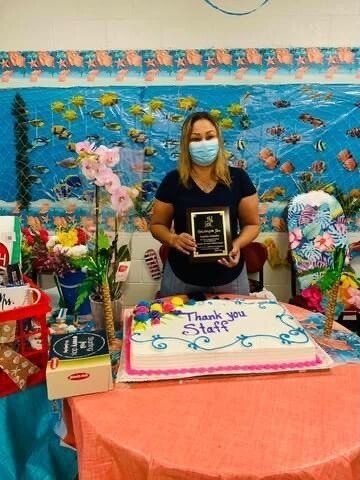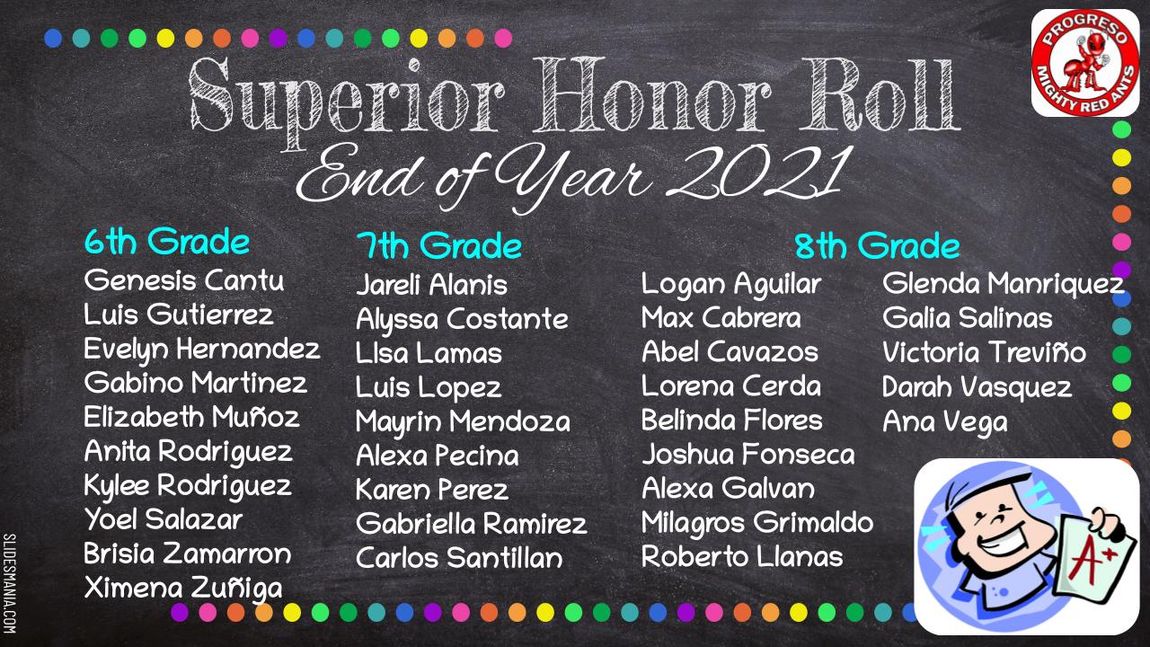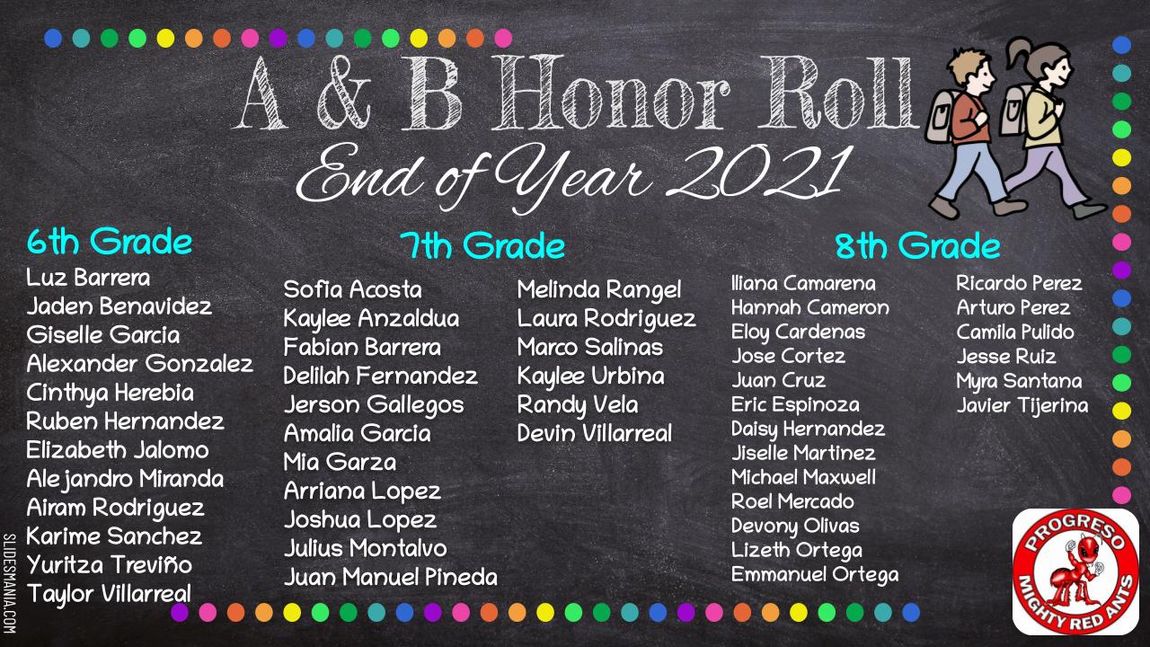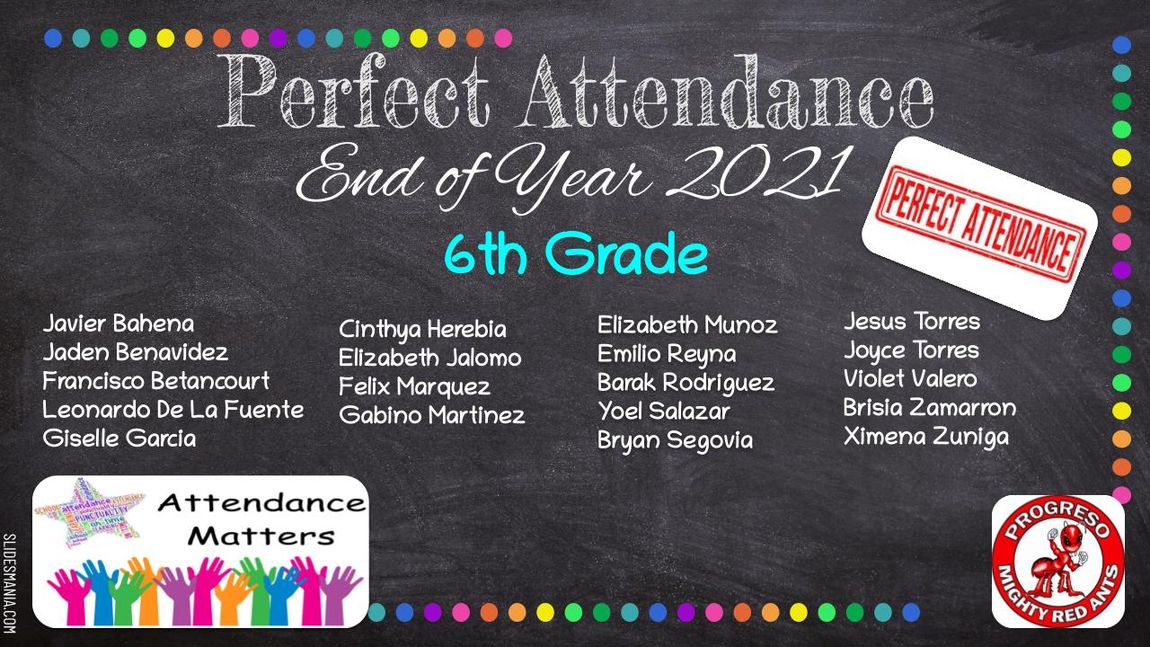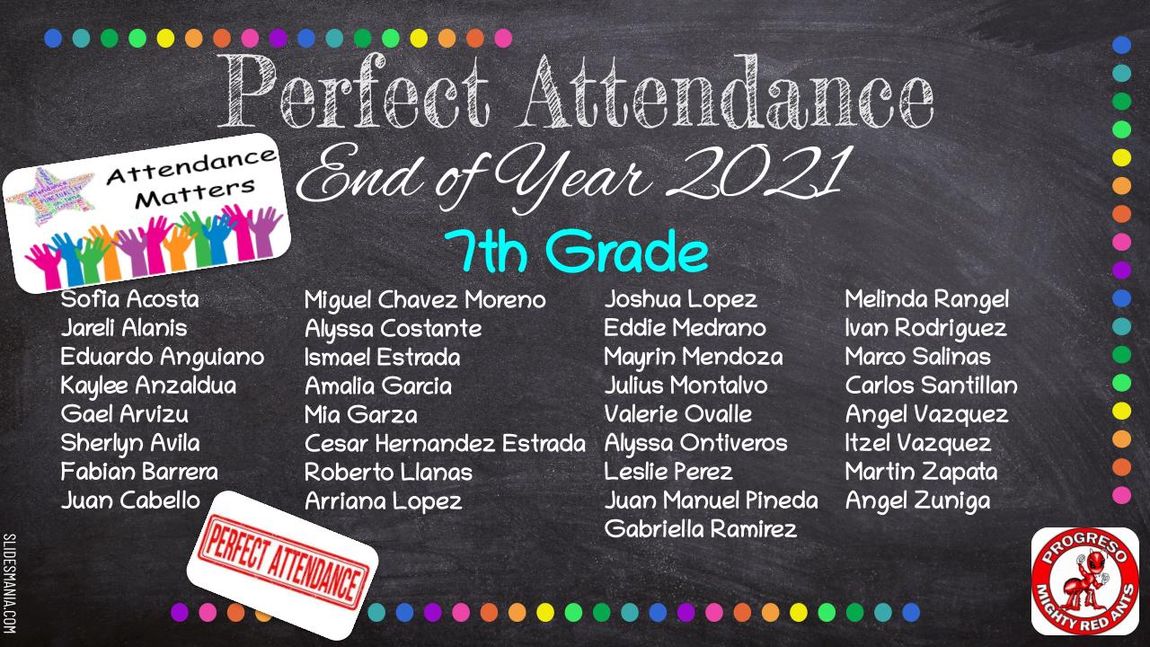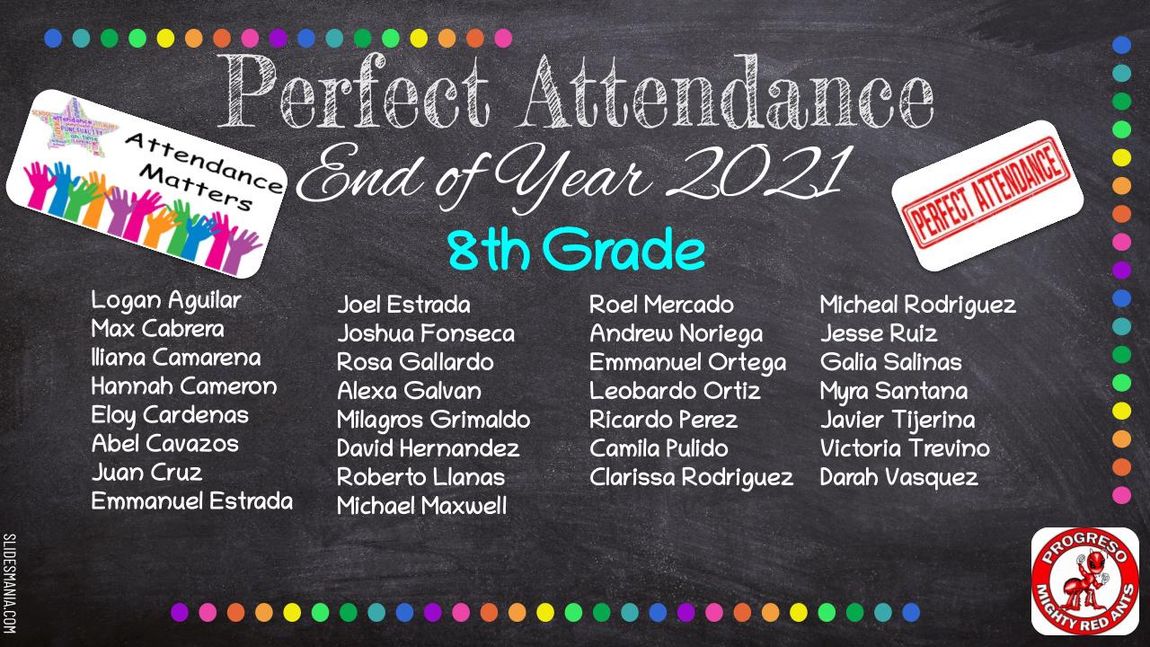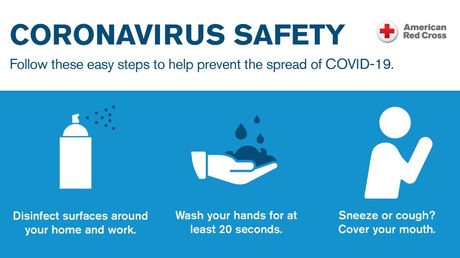Welcome to Dorothy Thompson Middle School, Home of the Mighty Red Ants!
DTMS provides students the opportunity to succeed for the benefit of society. We provide a student-centered learning environment that instills high academic standards and expectations for success. DTMS Administration, Teachers, Students, and Parents expect academic rigor, relevance, relationships, and results. Our 7th and 8th grade students have the opportunity to become part of Progreso Early College; it is the opportunity and distinguished honor to prepare in a rigorous program which helps them be college ready and earn up to 2 years in college while in high school. Our core values are learning, discovery, opportunity, leadership, freedom and responsibility. On behalf of everyone at Progreso DTMS, we thank our faculty, students, and parents for dedicating their heart and mind to our student success. DTMS is proud to step it up 100%.


Presenting our Teacher and Red Ant of the Year for
2021
Congratulations to our remarkable Teacher of the Year, Ms. Latigo!!! In the midst of the pandemic, Ms. Latigo excelled as a transformational teacher that she is. We admire her commitment as she goes above and beyond for her students and colleagues. She is relentless in her preparation and dedicated to ensuring that every student in her class has an opportunity to learn and succeed. She advocates for her students and motivates them to surpass their academic goals. Ms. Latigo is an exceptional teacher who LOVES to TEACH and LEAD 7th grade Math! As a grade team leader, she guides her team to work collectively to meet the academic demands of our students. She is a great asset to DTMS! We are PROUD to celebrate her as she deserves ALL the recognition in the world!!! RED ANT PRIDE!
A BIG SHOUT OUT to our Red Ant of the Year, Ms. Angelita Gonzalez! She is a hard working and dedicated paraprofessional who gives her 110% every day. She is always willing to help everyone to make DTMS the best educational place for our students. Ms. Gonzalez works collaboratively with the 7th grade team and is a tremendous supporter of new initiatives. We applaud Ms. Gonzalez for being an AMAZING role model.
Please know that Progreso ISD will follow recommendations for school opening and operation from the Centers for Disease Control (CDC), as well as state and local health officials. Circumstances related to COVID-19 may change throughout the coming school year, and this document will be updated as conditions change.
The Texas Education Agency (TEA) is allowing school districts a transition period to support schools in phasing in on-campus instruction over an additional four week period (September 21, 2020 through October 19, 2020). The decision to bring children on campus to receive instruction is your choice as a parent. Our campus has developed health and safety protocols. This document will guide you in more detail on these protocols.
Tenga en cuenta que Progreso ISD seguirá las recomendaciones para la apertura y operación de escuelas del Centro para el Control de Enfermedades (CDC), así como de los funcionarios de salud estatales y locales. Las circunstancias relacionadas con COVID-19 pueden cambiar durante el próximo año escolar y este documento se actualizará a medida que cambien las condiciones.
La Agencia de Educación de Texas (TEA) está permitiendo a los distritos escolares un período de transición para ayudar a las escuelas a introducir gradualmente la instrucción en la escuela durante un período adicional de cuatro semanas (del 21 de septiembre del 2020 al 19 de octubre del 2020). La decisión de traer estudiantes a la escuela para recibir instrucción es su decisión como padre. Nuestra escuela ha desarrollado protocolos de salud y seguridad. Este documento lo guiará con más detalle sobre estos protocolos.
Plan de Regreso a la Escuela Español



